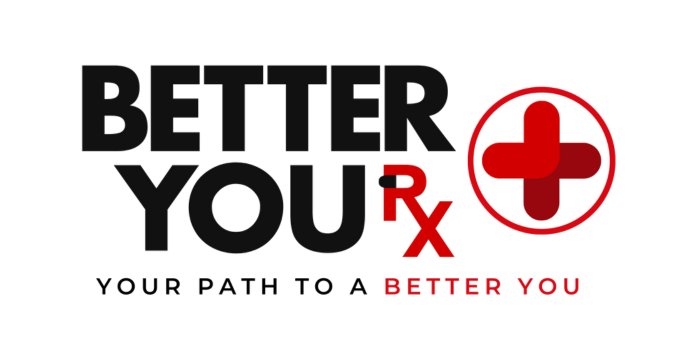Trulicity, a widely used GLP-1 receptor agonist, has revolutionized the treatment of type 2 diabetes since its approval in 2014. With its benefits ranging from improved glycemic control to potential weight loss, patients often wonder about the dietary adjustments needed to maximize its effectiveness. This guide explores the foods to prioritize and avoid, along with other practical considerations for those taking Trulicity.
What Is Trulicity?
Trulicity, the brand name for dulaglutide, is an injectable medication designed to regulate blood sugar in adults with type 2 diabetes. Administered once weekly, Trulicity stimulates insulin production, slows stomach emptying, and curbs appetite. Its dosages typically range from 0.75 mg to 4.5 mg, with healthcare providers gradually adjusting doses based on individual needs.
How Does Trulicity Work?
Trulicity mimics the action of GLP-1, a hormone that enhances insulin secretion while suppressing glucagon, a hormone that raises blood sugar. By doing so, Trulicity helps maintain optimal blood sugar levels. Additionally, it promotes weight loss by reducing hunger and prolonging feelings of fullness, which can benefit patients managing obesity alongside diabetes.
Foods to Avoid with Trulicity

Although Trulicity does not have specific dietary restrictions, certain foods may interfere with its effectiveness or exacerbate side effects. Here are key categories to limit:
- Fried Foods: High-fat, fried items like French fries and fried chicken can delay stomach emptying and worsen nausea—a common side effect of Trulicity. Opt for baked, grilled, or air-fried alternatives.
- Refined Grains: White bread, pasta, and rice lack fiber, causing spikes in blood sugar levels. Replace them with whole grains like quinoa, brown rice, and whole wheat bread for sustained energy and better glycemic control.
- Sugary Drinks: Beverages like soda, energy drinks, and sweetened teas contribute excessive sugar, complicating blood sugar management. Stick to water, herbal teas, or unsweetened drinks.
- Foods with Added Sugars: Many processed foods, including flavored yogurts, granola bars, and cereals, contain hidden sugars. Check nutrition labels to avoid exceeding 30 grams of added sugar per day.
Can You Drink Alcohol with Trulicity?
Alcohol isn’t strictly prohibited while taking Trulicity, but moderation is crucial. Alcohol can lower blood sugar levels, especially when consumed on an empty stomach or alongside other diabetes medications. To minimize risks, consume alcohol with meals and limit intake to one drink per day for women and two for men.
Foods to Eat While Taking Trulicity

Incorporating nutrient-dense foods into your diet can enhance Trulicity’s benefits:
- Protein-Rich Foods: Chicken, fish, eggs, and unsweetened yogurt stabilize blood sugar and promote satiety. Aim to include protein in every meal.
- Nuts: Almonds, walnuts, and other nuts provide healthy fats and fiber, improving heart health and maintaining stable blood sugar levels.
- Whole Grains: Options like oatmeal, barley, and whole wheat pasta offer high fiber content, which slows glucose absorption and prevents blood sugar spikes.
- Non-Starchy Vegetables: Broccoli, spinach, zucchini, and other low-carb vegetables are rich in vitamins and minerals, supporting overall health without raising blood sugar levels.
Other Things to Avoid While Taking Trulicity
- Large Meals: Overeating can worsen nausea and indigestion. Opt for smaller, more frequent meals.
- Concurrent Use with Certain Medications: Combining Trulicity with insulin or sulfonylureas may increase the risk of hypoglycemia. Monitor blood sugar levels closely and consult your healthcare provider for guidance.
Should Trulicity Be Taken with Food?
Trulicity can be taken with or without food due to its long-acting nature. However, eating balanced meals at regular intervals can help mitigate gastrointestinal side effects such as nausea.
When Is the Best Time to Inject Trulicity?
Administer Trulicity on the same day each week for consistency. If you need to change your injection day, ensure at least 72 hours have passed since your last dose. If you miss a dose, take it as soon as possible if there are at least three days until your next scheduled dose. If it’s too close to your next dose, skip the missed dose and continue with your regular schedule.
Potential Safety Concerns
- Common Side Effects: Nausea, diarrhea, vomiting, and abdominal pain are typical as your body adjusts to Trulicity. These effects often subside over time.
- Thyroid Cancer Risk: Avoid Trulicity if you have a personal or family history of medullary thyroid carcinoma (MTC) or Multiple Endocrine Neoplasia syndrome type 2 (MEN 2).
- Other Symptoms: Report any lumps or swelling in your neck to your healthcare provider immediately.
How to Reduce Side Effects of Trulicity

- Start with the lowest dose and increase gradually under medical supervision.
- Eat small, balanced meals to reduce gastrointestinal discomfort.
- Stay hydrated and avoid greasy or spicy foods that may exacerbate nausea.
- Use over-the-counter remedies like antacids if approved by your healthcare provider.
Conclusion
Trulicity offers a powerful tool for managing type 2 diabetes, but its effectiveness can be enhanced by adopting a healthy, balanced diet. Prioritizing nutrient-dense foods and avoiding those that spike blood sugar or worsen side effects will help you achieve the best results. For personalized advice on medications like Trulicity, consult trusted healthcare professionals and consider resources like Better You Rx, a pharmacy-affiliated website offering guidance and access to medications for managing diabetes.



